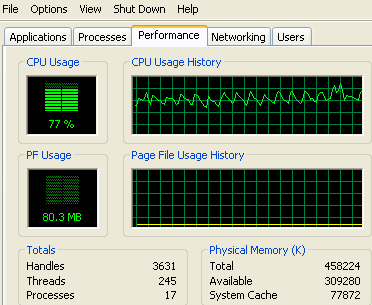MPEG-2 and MPEG-4 performance
It would be remiss of us to approach formal testing of the VIA EPIA M10000 with our regular benchmarking suite. The EPIA isn't about power performance. Benchmarking it with modern games and CPU-stressing benchmarks goes against the EPIA's ethos. Rather, we feel, it should be judged in accordance with its intended uses.
The EPIA is pushed as a small, quiet package that's adept at all things relating to multimedia. The back panel is ample proof of its uses. The first aspect to test was DVD playback. Much was made of the Northbridge's integrated MPEG-2 decoder. Its presence, VIA said, would take a considerable load off the CPU. We used a few DVDs as a basic playback test. The action-packed We Were Soldiers and the more sedate Memento and Pulp Fiction. Power DVD 4.0 Deluxe Edition was chosen as the software player. Sound was outputted to a 2-speaker setup.
There seems to be some validation of VIA's DVD playback claims. The movies played back without missing a beat. The integrated S3's output was both clean and colourful. Windows XP's Task Manager reported a consistent CPU load that hovered around 35%. General Windows' audio performance was as smooth as one would expect.
However, the rise of the compressed DVD format, DivX, has been sudden and spectacular. It offers near-DVD quality with a file size often no more than 20% of the original VOB's. Here's a case where MPEG-2 hardware assistance won't be beneficial. The test consisted of two DivX avi files (MPEG-4). DivX 5.03 was used and set to maximum quality from its configurations option.
The first DivX was an incredibly high 720x384 3,2000 Kbit/s action clip from Black Hawk Down, recorded by Ryszard. The sheer bitrate and on-screen action would test the CPU's mettle. Task Manager reported usage as 100% throughout the clip. An explosive scene appeared to make the processor judder heavily. The clip was recorded at 24.97 FPS, Windows Media Player Classic had this to report:

There was a reasonable amount of frame skipping going on with this clip. That's a given from the low frame rate observed. The second clip was at the same resolution but this time with a lower bitrate of 1,000 kb/s and a generally static scene. The EPIA had little problem in playing in this clip, with the framerate at the expected 25FPS.

Just what we'd expect. The EPIA M1000 generally does well with all but the highest quality DivX streams. CPU usage was at a more palatable level this time, too. As shown below.

We've established that the EPIA M1000 arrives with a myriad of features and that it's more than capable of running DVDs and medium bitrate DivXs fine. Further, it'll comfortably run basic OS work.
If you're wondering just how well it does in gaming, wonder no longer. The Nehemiah 1GHz / Savage pairing scored 758 marks in 3DMark 2001 and 16.7FPS in Quake III 1024x768x32 HQ.









